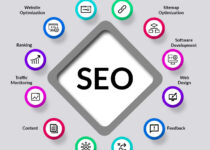AI in Marketing: A Trillion-Dollar Future With Risks – CMSWire
The Gist
- AI in marketing. $1.3 trillion market by 2032, with 80% of CEOs seeing efficiency gains.
- AI adoption surge. 27% increase in global AI spending, essential for all companies.
- Generative AI risk. Unchecked use can lead to legal issues, lacks human touch.
According to
From chatbots to email campaigns to highly targeted advertising, AI is proving affordable, doable and powerful — and firms using it now are already putting distance between themselves and their competitors.
AI in Marketing: What’s at Risk?
While a generative AI service like ChatGPT will shape the future of marketing, trusting its output unchecked would be a big mistake. That’s because it draws from the internet, and not only could that copy someone else’s work and result in intellectual property infringement, the data could contain personal, inaccurate or offensive information.
That can lead to a slew of legal issues, damaging a company’s reputation and harming a marketer’s career.
Generative AI can lack “feel,” too, and automated messaging can’t quite replicate critical components of marketing. Regardless of how much effort, time and money is saved, it’s not worth it if your work is sterile and boring.
So what’s a marketing leader to do? The technology isn’t going away — it’s proving to deliver major operational, financial and competitive advantages — so it’s time to embrace it … but safely.
Related Article: AI in Marketing: More Personalization in the Next Decade
A Matter of Policy
From eager Gen Zers to cautious veterans, it’s time for all marketers to begin using AI. First, though, leaders must establish and maintain control, and these tips for AI can help:
- Create policies, follow the action: Insist AI is not used for client-facing projects unless vetted and approved by select team leads. Generative AI tools should work from approved databases only when possible. Also, monitor usage and consider investing in detection tools to track where AI is being applied.
- Hands-on experiments: Encourage personnel to experiment with tools like ChatGPT. Usage will identify what works, what doesn’t and raise important questions. Learning by doing will enable all to become familiar with safe and productive use, while likely revealing why output must undergo vigorous review.
- Take a team approach: Create a group of core users to kick the tires and provide insight. Not only can this shape strong policies, it can develop best practices. What’s more, make sure all generations are represented — this will raise excitement and adoption throughout the organization.
Related Article: AI in Marketing: Balancing Creativity and Algorithms for Marketers
Getting Started
Despite the very real risks, the benefits of AI are enormous. ChatGPT, for instance, can help generate content at scale and automate time consuming tasks. In fact, having staff experiment with generative AI tools is a good place to start.
If your team hits a creative wall, they can use AI in marketing to generate and stimulate ideas. If research produces complex information, they’ll find that ChatGPT can quickly make it understandable. And as they progress, they can try using it for first drafts of blogs, emails, product descriptions, ad copy — but only for internal purposes and accompanied by thorough review.
Just remember that human intervention and oversight is always needed in order to develop your marketing capabilities along with the technology’s evolution, safely.
Learn how you can join our contributor community.

